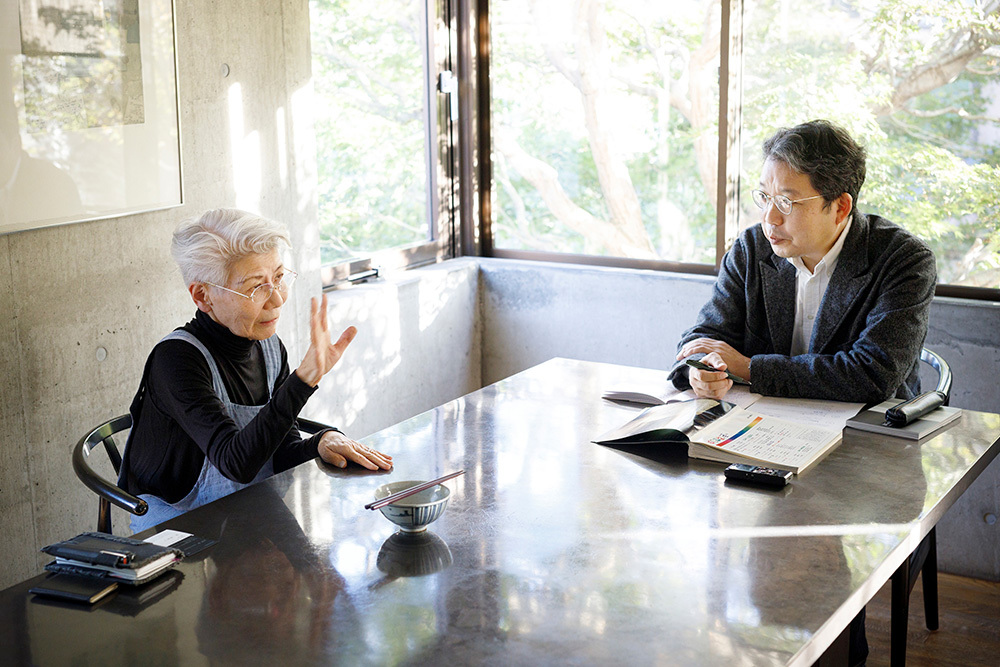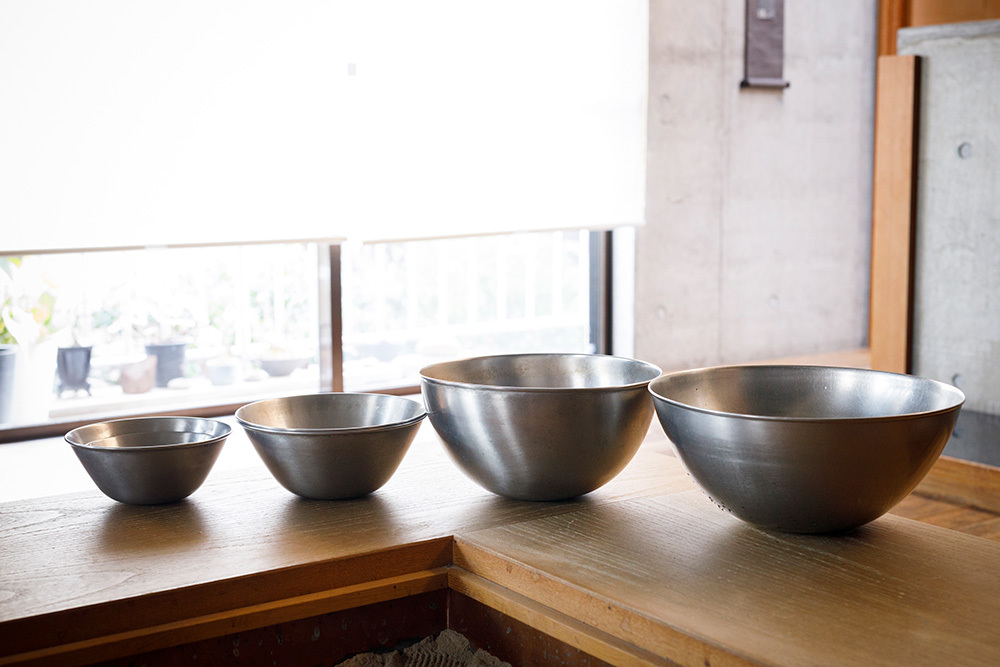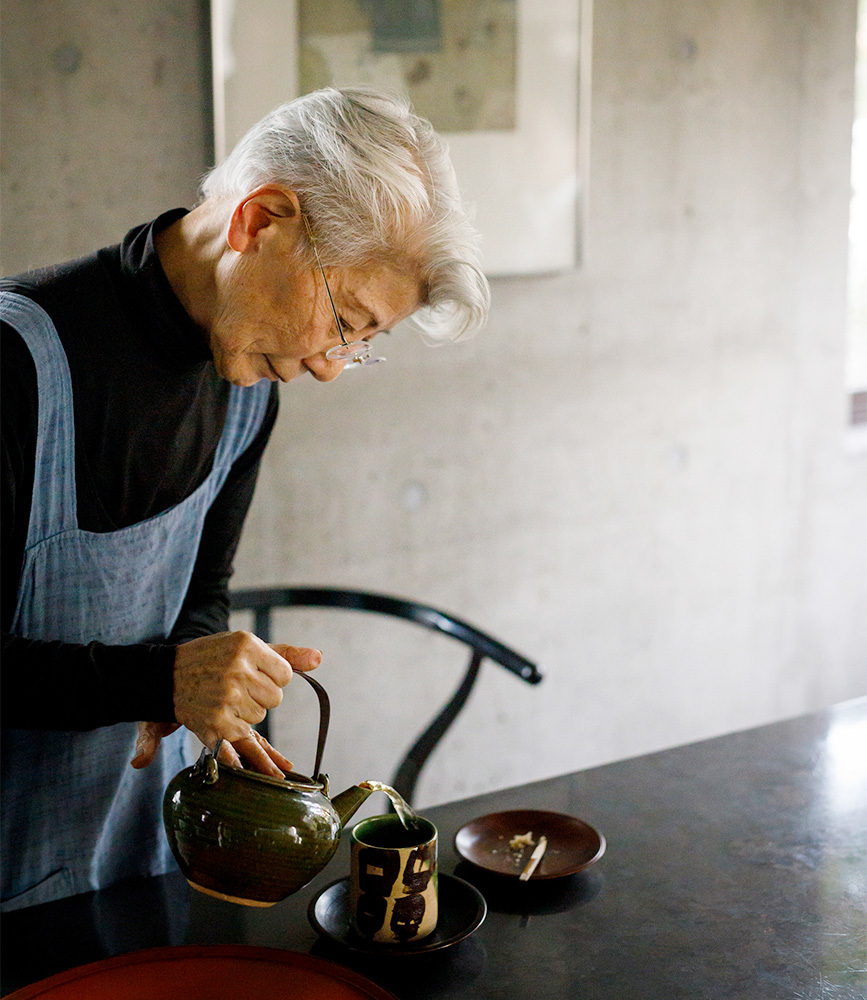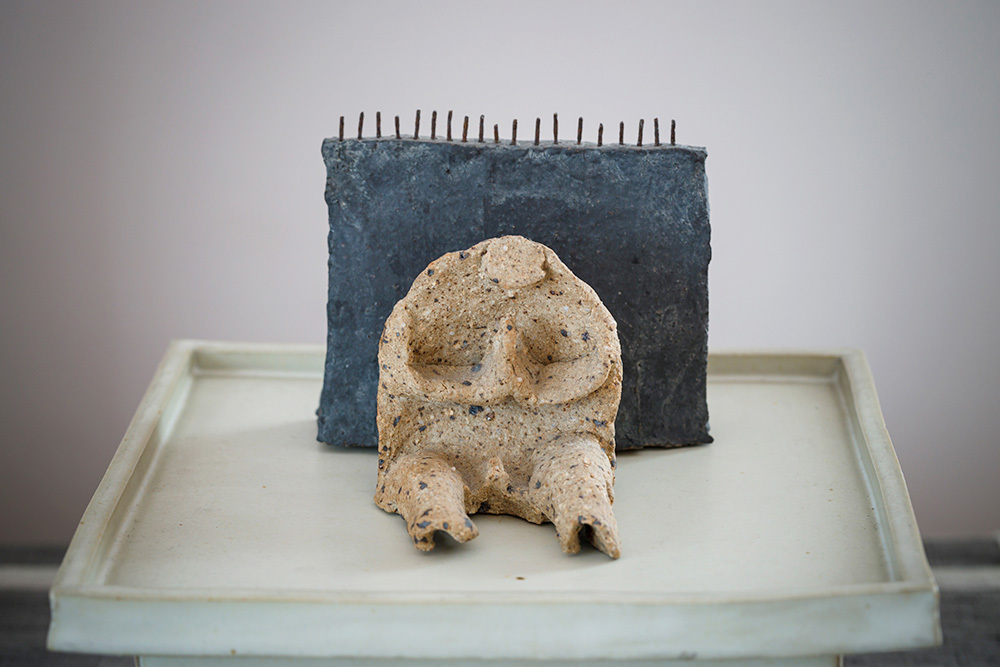Continuing from last time, Hirokazu Tanaka of Dentsu Inc., representing the Beautiful Living Research Institute, spoke with coordinator Setsuko Yamada to gather insights from those who naturally practice "beautiful living."
*For more about the Beautiful Way of Living Research Institute, click here
Cherishing Everyday Life and "Utility Beauty"

Tanaka: Professor Yamada, your work has focused on bringing Japanese tradition into the modern era. As exemplified by your exhibitions at Matsuya Ginza department store, where you've been involved for over half a century, I sense that "vessels" are central to this.
Yamada: It's not specifically about vessels, but rather things we use every single day, right? For example, using your favorite chosen vessels—regardless of price—to serve food with gratitude. I believe "cherishing each day" is built upon such accumulations. Furthermore, using different vessels for hospitality or each season adds color to daily life. With the theme "For a Better Future," I'm endlessly excited about the next project—working with this person, using this material, not limited to vessels, to create something new.
Tanaka: I feel this connects to the "beauty of utility" that emerged from Yanagi Muneyoshi's Mingei movement.

Sori Yanagi's "Stainless Steel Bowl" – indeed, the shape subtly changes depending on the size.
Yamada: While techniques, materials, and expressions differ between Mingei and today's mass-produced crafts, Mr. Sori Yanagi pursued "the beauty of utility" not within craft itself, but within lifestyle design. I've used Mr. Yanagi's stainless steel bowls for over 50 years, and each size has a distinct shape.
When Mr. Sori began designing the bowls, he sent a veteran staff member from his office to attend classes by a renowned culinary researcher. They thoroughly researched what tools were needed for which dishes, and the specific motions involved. Based on this, he meticulously designed each bowl: this shape for washing vegetables and dishes, that shape for mixing. I consider each a masterpiece of design—beautiful, easy to use, and deeply satisfying. I highly recommend trying them.
Living thoughtfully doesn't take more time
Tanaka: Humans cannot live without eating, so tableware and tools are inseparable from daily life. Yet among younger people, more are eating only bread, sweets, and cup noodles, rarely using tableware.
Yamada: It's concerning to see food packaging increasingly replacing actual tableware. Yet, I also sense a growing movement to reevaluate our lifestyle culture. At Matsuya Ginza, there's an event called "Handmade Crafts Direct Sales" that's been running for nearly 20 years. In September 2021, amidst the harsh realities of the pandemic, many customers came out, and we recorded our highest sales ever. It was a wonderful event that made me truly feel, "Customers are amazing" and "People and things are worthy of trust."

Professor Yamada, who brews tea during the interview
Yamada: While it's said to be an era where things don't sell, paintings and objets d'art are selling well at Matsuya now. Sales of the shrine cabinets we produced with Alte Meister, a long-established Buddhist altar manufacturer in Aizuwakamatsu, also seem to be growing. I see these cabinets as "a new form of prayer," "a box to hold important things and moments, to look into one's own heart." It may reflect the anxiety-ridden state of society, but I feel this growing interest in lifestyle culture and spirituality is an expression of people's desire to illuminate their own path and live better lives.
Tanaka: Professor Yamada, your life and work seem deeply rooted in "gratitude." And the object of that gratitude isn't necessarily a specific deity...
Yamada: It's gratitude for being alive. That I am here now is thanks to my ancestors and various connections. It's a sense of paying respect to the relationships between things. Just as we receive nature's bounty and prepare food with a grateful heart, shouldn't we choose vessels that allow us to enjoy that food more deliciously?
Tanaka: I see. Tableware truly serves as the medium connecting food and people.
Yamada: Exactly. And I think one way to show gratitude for being alive is to "live carefully." Relationships vary from person to person, and everyone leads busy lives, but just try living a little more carefully. Living carefully doesn't take that much time, does it?
Living with "Prayer"
Tanaka: Earlier, you mentioned proposing a kitchen altar as a "new form of prayer" at Artemaster. After the Great East Japan Earthquake and the COVID-19 pandemic, "prayer" feels like it's become a keyword of our times.
Yamada: My first visit to Artemeister was in 1998. Much of my inspiration stems from my own daily life. I have a Buddhist altar at home and never neglect to offer water and flowers, but I never imagined I would become involved in the "culture of prayer" encompassing faith and religion.
However, I always felt there was a need for objects or practices that could hold the subtleties of the human heart – not just the feelings of mourning for ancestors, but also the daily joys and sorrows, and the awe we feel towards nature. For example, in my home, the Buddha statue crafted by ceramic artist Keiji Ito and the "Buddha Footprint" sculpture placed in the garden fulfill this role. Seeing them morning and evening brings a sense of calm, enveloping me in nature and a reassuring feeling of being watched over.

Buddha statue by ceramic artist Keiji Ito
Tanaka: Seeing the photo made me eager to see the actual piece. This Buddha has a presence reminiscent of the Aomori Gassho-style clay figurines. It seems to embody a pre-Buddhist Japanese spirituality.
Yamada: When my grandson was two, even at that young age, he seemed to sense something. Whenever he came before this Buddha, he would sit down quietly and bow his head. That's what "imitating the form" means, I realized. It made me appreciate anew the importance of having something with a soul nearby.
Seeing this pure Buddha seated brings peace to my heart. And it naturally leads me to wish for my family living today, "Please stay healthy and well for another day."
Tanaka: That transcends mere religious sentiment; it's a beautiful attitude and posture toward life.
Yamada: I think prayer is an expression of gratitude, wishes, and hope for the fact that humans are kept alive. After experiencing the current pandemic, haven't we reached a critical point where if we neglect nature any further, humans will no longer be able to survive? Alongside prayer, we must consider how to leave the Earth beautiful for future generations. And within our own capabilities, day by day, meal by meal, line by line, isn't it about living diligently and carefully, sparing no effort?
Tanaka: Based on your experiences, Professor Yamada, we've gained many insights for " : Beautiful Ways of Living." Thank you very much for today.
: The Institute for Beautiful Ways of Living
We focus anew on practices and philosophies long embedded in Japanese daily life, proposing "Beautiful Ways of Living" – such as "living in harmony with nature," "embracing inconvenience and effort while valuing process and attitude," and "cultivating personal wisdom and skill" – through diverse activities in forms relevant to modern times. Its main content, "The Living Calendar," introduces and proposes seasonal living culture aligned with the "Seventy-Two Seasons"—an ancient Japanese method of dividing the year into seasonal segments. This is delivered through apps and books. The calendar app "The Living Calendar" has reached 770,000 cumulative downloads, while the book "The Living Calendar" is a long-selling title with 10,000 copies sold.
https://www.kurashikata.com/










